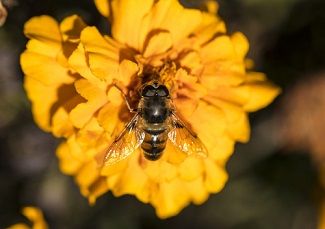FDA Answers Common Questions About Using Antimicrobials in Bees
When the Veterinary Feed Directive rule change was announced, it sparked a lot of questions from veterinarians and beekeepers. Luckily, the FDA just released answers to the most common questions.

When the Food and Drug Administration (FDA) implemented a new Veterinary Feed Directive (VFD) rule change in January 2017, honeybee producers and veterinarians were both affected. Various drugs and antibiotics that used to be over-the-counter moved underneath the VFD and required a written prescription from a veterinarian.
But veterinarians and beekeepers still had questions.
Luckily, the FDA created “Using Medically Important Antimicrobials in Bees: Questions and Answers” to explain the use of medically important antimicrobials in bees to help veterinarians and beekeepers better understand the new directive.
RELATED:
- Veterinary Beehive Exam: Step-by-Step
- Can You Become a Certified Bee Veterinarian?
The document goes through the 9 most commonly asked questions from beekeepers about the appropriate use of VFD and prescription drug products for bees. Detailed responses are available at fda.gov.
1. Which medically important antimicrobials are FDA-approved for therapeutic use in bees?
There are currently 11 applications approved by the FDA for use in bees that contain 1 of 3 medically important antimicrobials—oxytetracycline, tylosin, or lincomycin. Both veterinarians and beekeepers need to be aware of each.
2. How can a beekeeper access these approved drug products?
The only way a beekeeper can access any of the approved drugs is with a prescription or VFD from a licensed veterinarian.
3. What is the difference between a prescription and a VFD?
These are 2 distinct categories of new animal drugs. The major difference between them is that VFD drugs are administered through animal feed.
4. What is a Veterinary Feed Directive?
A VFD is a written statement from a licensed veterinarian ordering the use of one of the 11 drugs in or on an animal feed.
5. What is required for a VFD to be “lawful”?
Besides needing to be written by a licensed veterinarian, a VFD must be in compliance with all applicable veterinary licensing and practice requirements.
6. What constitutes a valid veterinary-client-patient relationship (VCPR)? Does this vary from state to state?
A VCPR means that the veterinarian can diagnose the bees and provide a VFD. This does vary from state to state, depending on whether the veterinarian is writing a prescription or VFD.
7. How long must prescriptions or VFDs be kept and who must keep them?
For a VFD, the veterinarian, client, and distributor must keep a copy of the order for 2 years.
8. What information is available on the FDA’s website that may be helpful to beekeepers or veterinarians providing services to beekeepers?
- Presentation on Medically Important Antimicrobials in Animal Agriculture — Honey Bees
- Brochures and videos for producers like beekeepers, veterinarians, and distributors on our Veterinary Feed Directive (VFD) page
- Guidance for Industry #120, “Veterinary Feed Directive Regulation Questions and Answers”
- Animal Drugs @ FDA
9. What other sources of information are available to beekeepers?
- The American Beekeeping Federation
- The American Veterinary Medical Association
- The Honey Bee Veterinarians Consortium